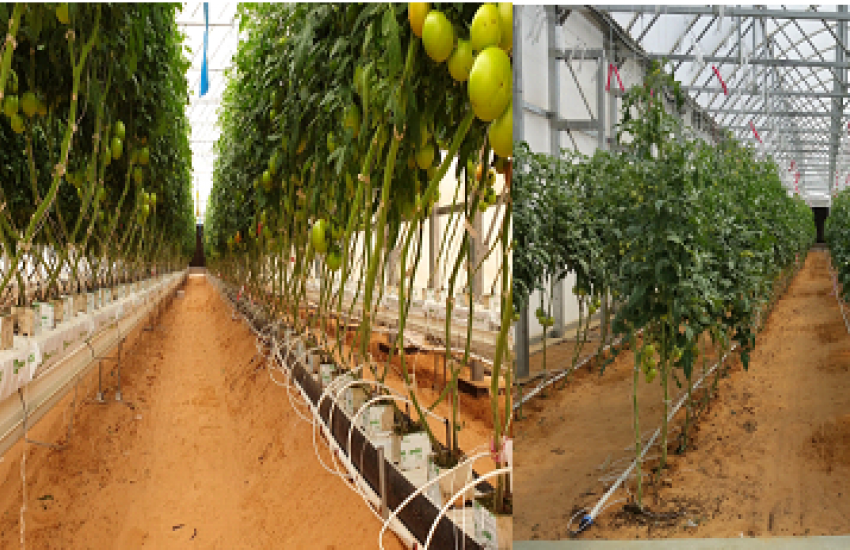Image

Background
In the greenhouse, the solar light is converted to a marketable vegetable product. For this, the plants will have to intercept the solar light, and the more plants, the more light will be intercepted. But, standing next to each other, the plants also compete for light, which makes that after a certain plant density.
Experiment History
- Seed Sowing: 21 June 2018
- Variety: Tone Guitar
- Transplanting: 17 July 2018
- Plant density: 2.5 plants per m², stem density differences by keeping additional stems
- Harvesting period: 5 September 2018 – 13 April 2019 (32 weeks)
Goals
Study the difference between three stem densities on tomato production.
The main factors studied are:
Three different stem densities: 3.75, 5 and 6.25 stems/m²
Result overview
Optimum stem density is 5 stems/m²
| Stem Density | H1 | H2 | H3 | Average |
|---|---|---|---|---|
| 3.75 stems/m² | 26.2 kg/m² | 29.2 kg/m² | 39.2 kg/m² | 31.5 kg/m² |
| 5 stems/m² | 29.9 kg/m² | 36.4 kg/m² | 40.8 kg/m² | 35.7 kg/m² |
| 6.25 stems/m² | 31.5 kg/m² | 35.2 kg/m² | 37.4 kg/m² | 34.7 kg/m² |
Recommendation
- Tomato-growing goes best when the stem density is around 5 stems/m²
- This stem density was achieved by a plant density of 2.5 plants per m² (plants 25 cm separated in the line, with lines at 1.6 meter in between)
- Further increase of density doesn’t give the extra yield.